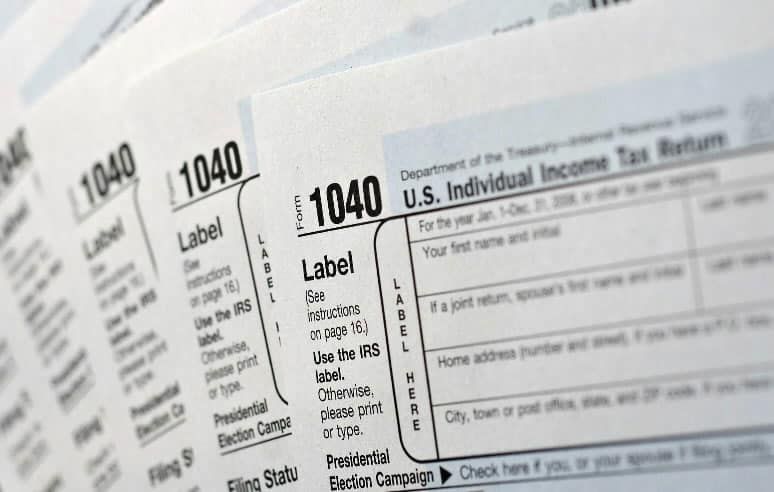Tax law changes affect individual tax strategies

Taxpayers have just signed — or soon will sign — their 2017 tax returns, but it isn’t too early to be thinking about how the new federal tax law will affect income and expenses in the 2018 tax year.
Many taxpayers may have already noticed a change to the tax withholdings on their paychecks. For many, the new tax rates have caused decreases in taxes withheld. But not all taxpayers are treated alike — there are too many personal circumstances that come into play to easily predict whether the decreased withholdings will result in a tax obligation or tax return come April 15, 2019.
While numerous sources of information exist to help taxpayers prepare, consulting with a tax expert who knows your personal circumstances would be well advised. Listed here are 22 areas of the law that have changed and should be considered in your planning.
SPONSORED CONTENT
Federal District Court Rules Corporate Transparency Act Unconstitutional . . . But Most Small Businesses Must Still Comply
Lyons Gaddis Real Estate and Business Attorney Cameron Grant shares important details of the Corporate Transparency Act (CTA).
RELATED: Keep Your UI Rate Low
Tax rates — Tax rates in most cases have been lowered so that taxpayers will pay less on the same dollars of income. That’s what has triggered the withholding decreases that many income earners are experiencing.
Tax brackets — Tax brackets have shifted, too, with most shifting up, meaning that taxpayers can earn more without going into a higher bracket. That isn’t universally true; consult the new brackets to see for yourself.
State and local tax deductions — This is one of the most significant changes to the tax law and affects people in high tax states more than in places like Colorado. Taxpayers can deduct up to $10,000 of state and local taxes, including real estate and state income taxes, on their federal returns.
Standard deduction — The standard deduction, taken by taxpayers who don’t have enough itemized deductions to exceed the standard, has almost doubled to $12,000 for an individual or $24,000 for a couple. This means more taxpayers will likely not need the services of a tax preparer. About 30 percent of tax filers itemize now, and that will decrease.
Medical deductions — The tax law changes in almost all cases applies to income earned and expenses incurred in 2018, not the 2017 year for which tax returns were due on April 15, 2018. One major exception is with regard to medical expenses. The new law rolls back this category of deduction to expenses incurred from Jan. 1, 2017, forward. And it’s less beneficial. Taxpayers may now deduct up to 7.5 percent of adjusted gross income in medical expenses, instead of the 10 percent in prior law.
Charitable deductions — Because of the standard deduction change, many taxpayers will no longer have a tax reason to contribute to a qualified charity. This means non-profits will need to make the case for contributions on the merits of the need, instead of the need coupled with tax benefit.
Personal exemptions — The personal exemption of $4,050 per person is gone.
Unreimbursed business expenses — These are also gone starting in 2018. Workers who drive for their employers but are not reimbursed, for example, will no longer be able to deduct the expense.
Casualty and theft losses — Most deductions for losses from theft or casualty are gone from the tax law. Make sure your insurance coverages are up to date.
Reimbursed moving expenses — These are now taxable as income under the new law.
Tax preparation deduction — Fees charged by accountants and tax preparers are no longer deductible except in certain cases. For example, if a taxpayer files the Schedule F for farm income, the cost to prepare that form is deductible. Preparers will need to itemize their services in order for taxpayers to benefit.
Alternative minimum tax — This tax, which was designed to prevent high income earners from avoiding taxes with a myriad of tax deductions, has been adjusted upward so it affects fewer middle-income earners.
Child tax credit — The child tax credit doubles to $2,000 and the threshold for phase out has risen significantly, so more parents will qualify.
Mortgage interest deduction — This deduction will remain for most taxpayers except, perhaps, in Boulder and other places with high property valuations that require large mortgages. Mortgage interest paid on homes bought after Dec. 15, 2017, and not exceeding $750,000 in mortgage indebtedness will still be able to deduct the interest.
Health insurance tax penalty — The tax penalty brought about by the Affordable Care Act will go away after 2018. It still is in effect for the first year of the new tax law.
Marriage tax penalty — The tax penalty that resulted from combining incomes of single people when they got married and shoving them into a higher tax bracket is now largely gone for everyone except those in the top two brackets.
Estate tax — While this tax did not affect many taxpayers, the exemption amount has now doubled to $11.2 million for an individual and $22.4 million for a couple. People with large estates or with valuable property such as farms will see a benefit.
Capital gains — The mechanics of capital gains remains much the same but the brackets have shifted somewhat.
Child and dependent care credit — This credit remains in place.
Education — Tax breaks applying to education remain in place, and, in at least one case, expanded. The 529 educational accounts used by families to set aside money for college education can now be used for any level of education, including private school tuition.
Home equity loan interest — Interest paid on home equity loans is no longer deductible.
Pass-through income — For small business owners who pass business income through to personal tax returns, 20 percent of the income can be deducted before applying ordinary tax rates.
Tax planning, important as it is, is just one part of financial planning that all taxpayers should consider. Understanding the implications of the law should help income earners determine what to tell their employers’ payroll departments in calculating how much to withhold from each paycheck.
If the new law is having a negative impact on the amount of tax paid, taxpayers should consider directing more pre-tax income toward retirement accounts or 529 educational accounts.
People may also need to rebalance their 401Ks and investment accounts. The performance of the stock market in the past couple of years may have resulted in a larger share of total investments now showing up in stock portfolios instead of in bonds when that isn’t what the investor desires.
Consulting an investment counselor as well as a tax professional may be needed, depending on the individual’s circumstances.
Sources for this article included published reports from AARP, the New York Times, Turbotax, U.S News and World Report, USA Today, CNBC, Motley Fool and Forbes.com.
Taxpayers have just signed — or soon will sign — their 2017 tax returns, but it isn’t too early to be thinking about how the new federal tax law will affect income and expenses in the 2018 tax year.
Many taxpayers may have already noticed a change to the tax withholdings on their paychecks. For many, the new tax rates have caused decreases in taxes withheld. But not all taxpayers are treated alike — there are too many personal circumstances that come into play to easily predict whether the decreased withholdings will result in a tax obligation…
THIS ARTICLE IS FOR SUBSCRIBERS ONLY
Continue reading for less than $3 per week!
Get a month of award-winning local business news, trends and insights
Access award-winning content today!


